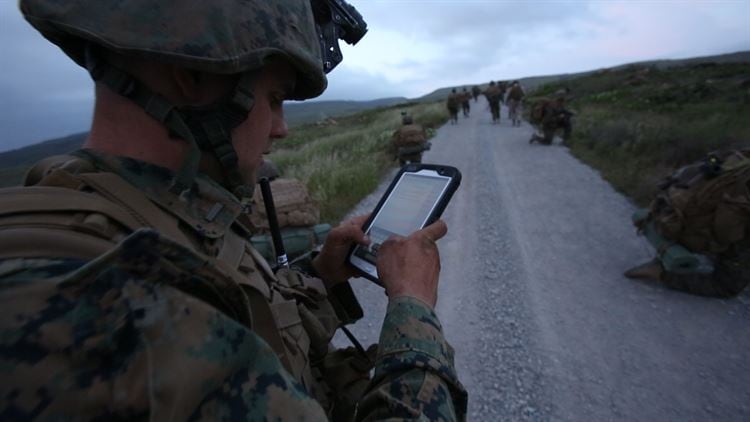The top Marine is looking for ways to lighten the burden carried by grunts, while also making them more lethal by adding new tech, rockets and drones.
Some of those initiatives to lighten infantry Marines’ loads might include new methods of powering equipment, rechargeable batteries or new ammunition that doesn’t have brass casings.
“Weight is everything,” Gen. Robert B. Neller, the commandant of the Marine Corps, told reporters at a National Defense Industrial Association event in early March. But “we keep putting more stuff on them.”
The Corps’ new efforts to reduce the weight burden on grunts also is part of an overall effort to lighten the entire ground combat element to make it more maneuverable and lethal.
To do that, the Corps is reducing the number of some of its older anti-tank missile systems like the heavy and cumbersome tube-launched, optically tracked, wire-guided, or TOW, system and replacing it with more FGM-148 Javelins. The Javelin is a man-portable anti-tank weapon system that uses an infrared guidance system.
The force has also been adding new tech. For example, the Marines recently added a new rifle-mounted laser range finder, and Neller is pushing tactical drones to every infantry squad.

And soon, some Marines will be carrying ruggedized hand-held tablets that will help Marines rain down more accurate air and artillery fire.
The new tech provides added lethality, but it also means more weight and more batteries grunts must carry on patrol.
With Marines at times carrying weight more than 100 lbs., every added piece of gear is a big deal. The human body can only carry about 60 percent of its body weight, Neller explained. That means bigger people can carry more weight.
“The physical reality of being infantry causes you to make certain decisions,” Neller said.
After a 15-mile movement a grunt might say, “I didn’t need this, I didn’t need that,” but the reality is “they may need it later.”

“I’ve got to have ammo, I’ve got to have water, I’ve got to have something to eat maybe, and then everything else becomes a decision,” Neller said.
Some of the solutions might be changing out the brass ammo casings and giving grunts rechargeable batteries or alternative ways to charge their gear.
Tank rounds 15 years ago used to have brass casings, now it’s just the main round and a base that is consumed with the kinetic energy when the round is fired.
Today, “there’s ammunition being made like that,” Neller said. New ammo casings might be made of some kind of polymer or synthetic material.
A lighter and nimbler infantry has the added bonus of reducing logistics constraints and also reducing injuries.
Shawn Snow is the senior reporter for Marine Corps Times and a Marine Corps veteran.




